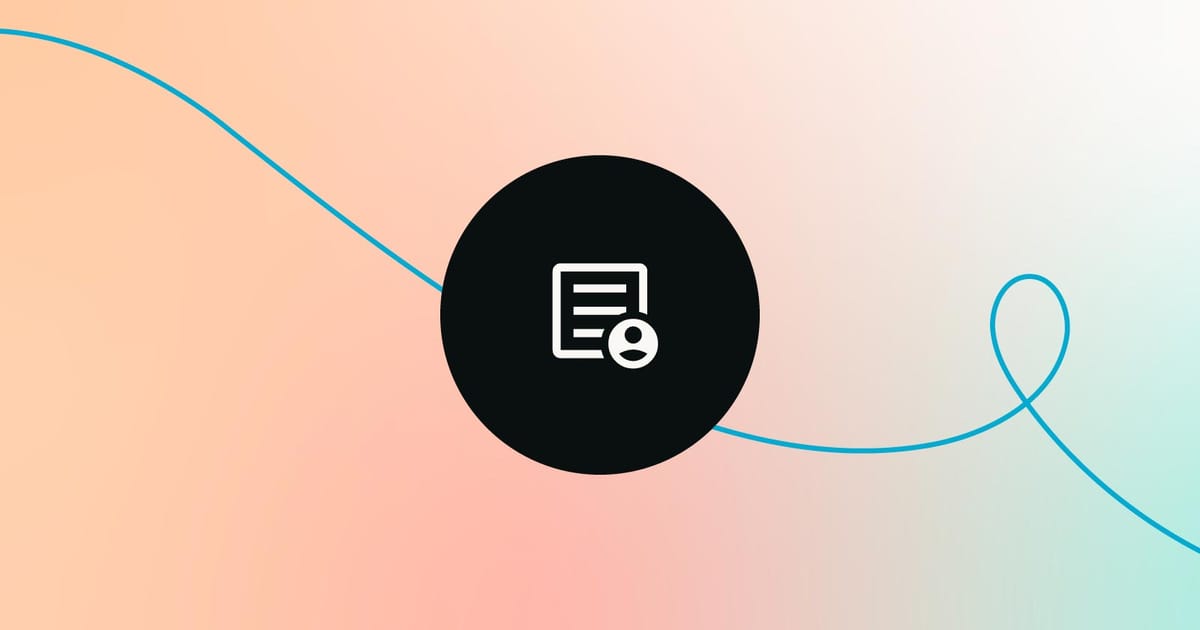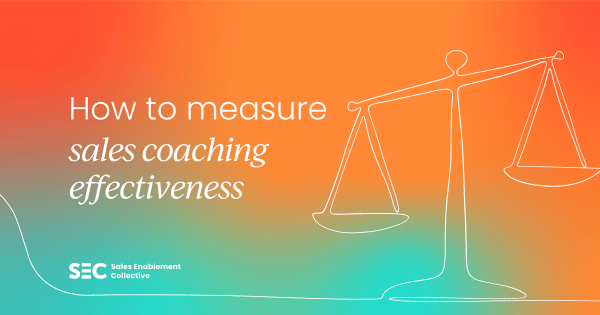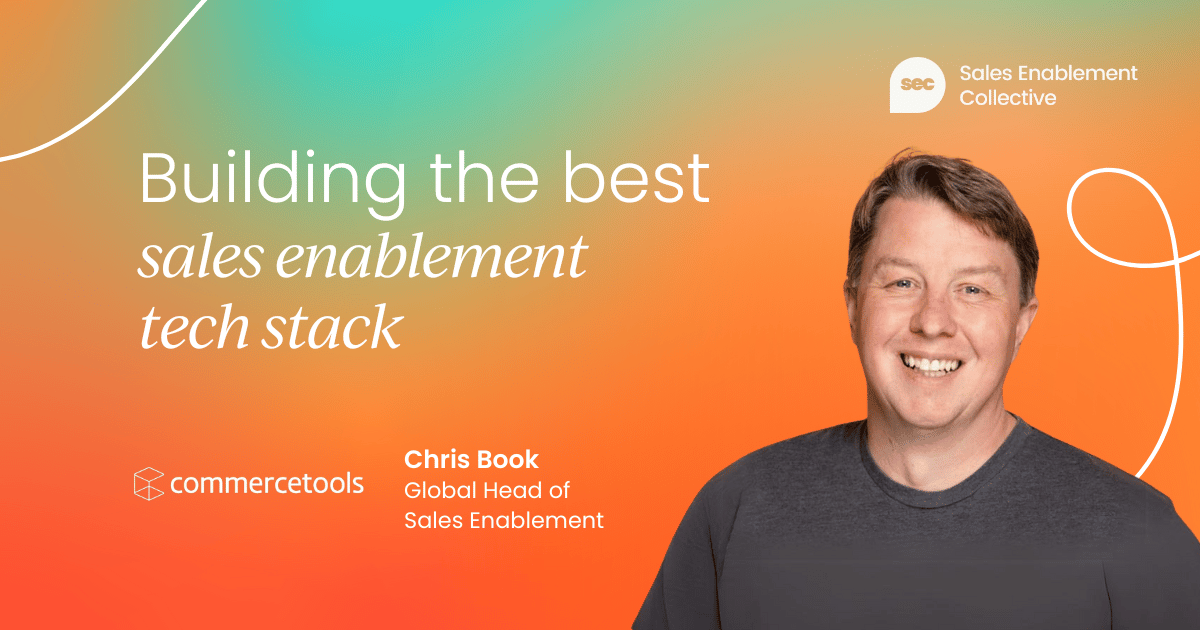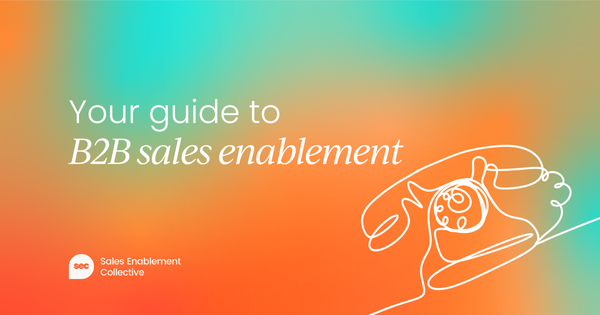What is B2B sales enablement?
B2B sales enablement is a job role. One where you’ll help salespeople close deals and move prospects further along the buyer journey. In B2B sales enablement, prospects are other businesses. So sales reps talk to decision-makers at those businesses. This means you have to understand and appeal to both:
- The needs and goals of the business, and
- The human needs and pain points decision makers experience.
The benefits of B2B sales enablement
So, why should businesses have a sales enablement function?
Ever watched a sales rep work?
They were busy selling, right?
All day, they’re on the phone, hustling to get deals over the line.

You know what it’s like to be this busy.
So you know that, when you’re wholly wrapped up in the doing of a job, there’s no time to step back. There’s no time to improve processes. There’s no time to document best practices. There’s no time to produce helpful resources that can be reused infinitely.
Where sales enablement comes in…
But sales enablers can do these things for sales reps.
They can stay separate from the action. They can keep an eye on the state of play. They can remain distant enough from the details of the job that they’re able to see the forest for the trees.
With this perspective, enablers can make support plays to help reps.
What enablers do
In some businesses, enablers will support specific deals. Mostly, though, they’ll produce high-ROI resources that increase the effectiveness of all sales reps.
They sit back from the action, keeping communication with their reps “in the field.” They produce and deliver supporting resources to those reps, helping them to close more deals and increase revenue for the business.
These resources will have various aims, like helping salespeople to:
- Handle common objections.
- Better communicate the value of the product or service.
- And to speak authoritatively about competitors.
How to build a B2B sales enablement strategy in 3 steps
You now know what sales enablement is.
You know why it’s useful.
But how do you do it?
How do you build an overarching enablement strategy that your leaders love?
Most sales enablement strategies consist of one or more of the following core components. Whether you tackle all three, and how in-depth you go, depends on the needs and available resources of your org:
- Development of sales training and coaching programs
- Production of enablement resources and content
- Production of onboarding processes for new reps
The approach to producing effective versions of these is largely the same. And it all comes down to understanding.
Here’s the approach...
1) Understand your org’s overarching business objectives
This is the true starting point of any strategy.
You need to make sure you’re chasing after the same things as the company at large.
For B2B sales enablement, this is usually pretty simple. The company leaders want to drive revenue and profits by closing more deals more efficiently.
But your sales leaders will have their own specific goals, too.
As the business’ sales enabler, it’s your job to support them in achieving those goals.
Where these are specific, they’ll give you direction that can shape your enablement strategy.
2) Understand your buyers
Most often, sales enablement means helping sales reps move buyers toward a buying decision.
To do that, you have to understand the customer journey.
Your org will deliver its own specific version of the buyer journey. Speak to stakeholders around the business. Figure out what that buyer journey looks like in an ideal scenario. Then figure out what it actually looks like in reality.
Noticing where these two diverge can give you a good sense of where reps need your help.
Ask the following questions:
- What pain points do customers experience?
- Where does the buyer journey take on friction? Where do prospects tend to get stuck?
- What recurring objections does the sales team face?
3) Understand your reps
Don’t skip the above two steps.
They’re critical.
If your strategy doesn’t align with what your business and sales leaders want, you’ll never get it off the ground.
At the same time, to really help your reps influence buyers, you need to understand the buyers themselves.
That means understanding what they experience as they interact with your business at various touchpoints.
But if you want to build an enablement strategy, there’s a third party you need to speak to.
The third party in question...
We’re talking about your sales reps, of course.
Your sales reps face challenges as they try to influence and persuade potential buyers.
It’s your job to help them overcome those.
To do that, you have to know what they are and understand them.
So gather as much feedback as you can.
Gather feedback on existing processes.
Figure out what a “good” sales rep looks like. Then figure out what a “great” rep looks like.
Who are your star reps?
Who are your overachievers?
What are they doing that other reps are not? What sets them apart? Are these things teachable? Do the gaps consist of transferable skills?
These are critical questions for your future sales training and coaching efforts, but you also want to understand what practical challenges reps face so you can:
- Improve processes.
- Improve software flows.
- Produce useful content and resources.
- ✅ Exactly what an enablement charter is (and what it’s not), so you can create one the right way from the start.
- ⌛ Pro tips and tactics for keeping your charter up-to-date, without it taking you hours a week.
- 🛠️An easy-to-use template to give you a headstart in creating your own charter with confidence.
- ...and more!
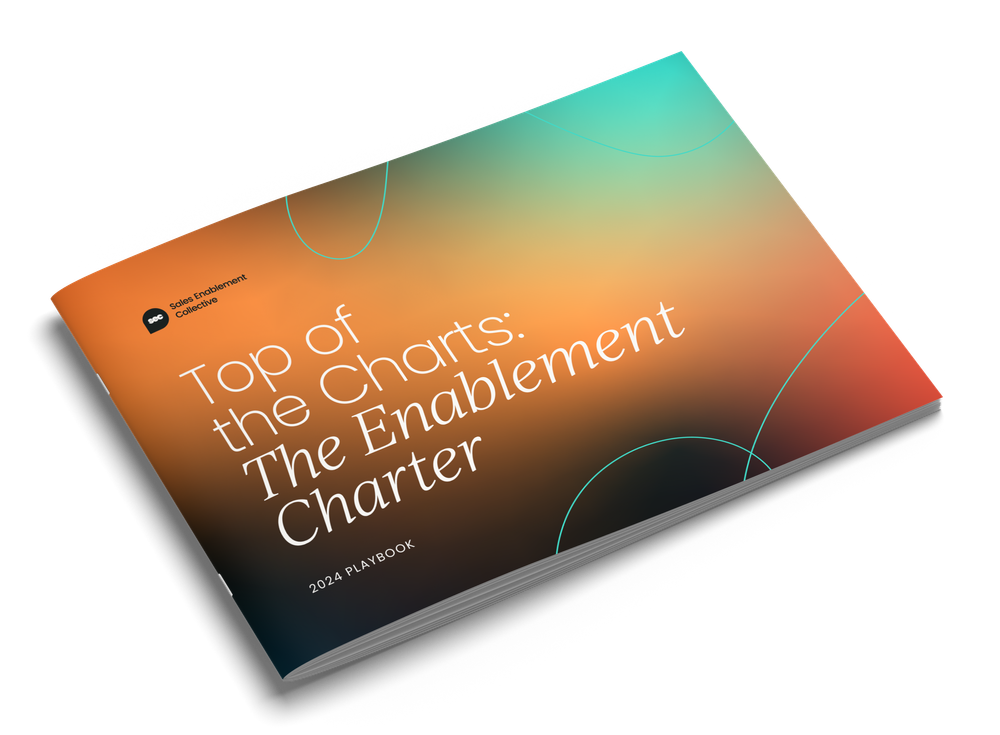
The most common challenge in B2B sales enablement (and its solution)
If price is a recurring objection for prospects, but you’ve got plenty of happy customers, you’ve got a price-to-value discrepancy on your hands.
Prospects don’t yet see the value.
So the price seems too high for the value they’re getting.
Some are willing to pay that price...
However, existing customers, experiencing that value first-hand, are happy to pay your price.
If those who perceive the value are happy with the price, those who aren’t happy with the price might not see the value.
Communicating value...
Where your salespeople struggle to communicate the value of your product or service, one of two issues can stand in the way:
- They don’t see the value themselves.
- They see the value, but struggle to communicate it in a persuasive way.

Create resources that help salespeople communicate the value
It’s an awful lot easier to sell something you believe in. If sales reps don’t see the value in what they’re selling, their lack of conviction will show.
They need to understand new products and features, and how they’ll help their prospects.
If they don’t understand the value, they need to keep asking until they do.
The best salespeople are conduits. They fully understand the value of the product or service, and it flows through them as they communicate it infectiously to prospects.
Set up knowledge share sessions
Organize sessions with product and development teams to communicate the value of new products and features to salespeople.
But be careful.
It’s easy to get these wrong.
Product people aren’t always good marketers or sellers.
It’s important that your salespeople dig for the deeper emotional benefits your new products or features hold for prospects. Don’t allow these sessions to turn into one-sided lectures about everything your new thing does. That’s not interesting to buyers.
Your sellers should leave these sessions with plenty of emotionally-charged information about all the great things prospects will be able to do once they buy.
Produce customer-facing resources
You can also work with reps to produce customer-facing resources that help prospects see the value firsthand.
De-risk the investment for the prospect by arming your reps with social proof and guarantees of product value in the form of testimonials and case studies for businesses of various sizes.
This way, reps can describe cases where companies similar to that of the prospect benefited in specific ways the prospect will understand and see as achievable.
Collaborate with other teams
Work on improving the buyer journey at all stages by taking a revenue enablement approach. Work with other teams to figure out which buyer touchpoints you can help improve.
This will indirectly enable your sales team by improving the buyer experience at various stages.
Be careful, though, not to blur the lines between your enablement role and content marketing.
Your sales team is your audience, first and foremost. Though you may sometimes create public-facing content, the purpose for that content will always be to help your sales team overcome specific problems they’re facing.
7 Tips for B2B sales enablement
1) Watch out for low adoption rates
If no one uses the resources you create…
They might as well not exist.
And you can only improve them if people use them and provide feedback.
Unfortunately, low adoption is a common problem in enablement.
The reality for salespeople
Salespeople are incentivized to close as many deals as possible. Your org rewards top performers, and sales attracts competitive people. No one wants to be a low performer, so reps create effective methods of their own they’d rather not share.
This helps the individual, but it hurts the team.
Reps might be unwilling to let go of these processes.
They might be unwilling to share them.
They might also be confident they can get better results doing what they’ve always done than by following your enablement advice.
Why to track content adoption…
The first step in solving this problem is to track adoption rates. Have reps log in their CRM, for example, whenever they use a particular deal.
This way, you can just look at the win rates of deals that use either
- Any enablement resource,
- A particular enablement resource
…and see if they’re higher than deals that don’t.
Other key metrics
There are other key sales enablement metrics to keep track of, too.
These include:
- Onboarding speed and time to first sale
- Sales training and coaching effectiveness
- Deal win rates
- Sales cycle length
- Onboarding
Covering all of them is beyond the scope of this article, so check out our dedicated page on sales enablement metrics.
2) Align sales incentives and KPIs with enablement goals
One surefire way to improve adoption rates?
Make it in reps’ best interests to use your enablement content.
Align incentives, rewards, and KPIs with enablement goals. If reps have to use enablement resources to qualify for an annual bonus, they’ll use them.
What about pushback?
While you might get some short-term pushback, the goal is to create resources that boost the performance of the entire sales team. That should mean higher sales, more company revenue, and eventually a larger bonus budget for your sales team.
In other words, these initiatives should increase the financial rewards for your sales reps. If people aren’t excited, make sure they understand this!
3) Collect feedback
Want to create better resources?
You need feedback on what you’ve already got.
You’ll get pointers on what needs improving:
- Format
- Content types
- How content is delivered
Your reps will have opinions on all of these.
How else feedback helps…
When you seek feedback, you give reps a sense of control over the help they receive.
This makes them feel empowered, rather than patronized, when you offer to help.
But there are practical considerations.
First, reps need to be able to give feedback as quickly and easily as possible. The feedback collection process is something they’ll repeat often. If they only rarely give feedback, you miss out on a lot of value.
As with anything that’s repeated many times, any friction in the process becomes that much more frustrating, and that much more likely to put reps off giving feedback when they should.
What to do…
So make sure it’s stupidly easy for reps to give feedback. Automate every possible step, and prompt them to give feedback at critical moments (like immediately after a sales call).
A Slack channel, or a board in your project management software, that’s readily available for ad hoc feedback and suggestions are also invaluable. If possible, attach these “idea scratchpads” to hotkeys on your reps’ keyboards so they can ping their ideas, suggestions, and feedback to you whenever they come to them.
4) Be humble
Approach the enablement role with humility.
You’re there to serve.
Empowering reps to give candid feedback, especially when they’re experiencing the emotional sting of a lost deal, can give you invaluable insight as to which direction you need to go.
How early input helps
Getting input early from reps also helps get them bought in to the process.
They become emotionally invested in the content you produce.
They voted for it.
They asked for it.
It's about how it makes salespeople feel...
They’ll be that pleased when they get it, because they’ll feel listened to. It’ll also solve actual, real challenges they face every day. This means the resources you create will have real impact on the team’s effectiveness.
Even if you just eliminate frustrations and friction from existing processes, reps will feel supported, they’ll experience less frustration, they’ll enjoy their work more, they’ll be more positive, and this will boost productivity.
5) Decentralize control
Most enablement functions are small.
You can’t make all the decisions yourself.
Empower your reps to determine their own destinies by polling them on the kinds of content they want and need most urgently. Give them control over, and a say in, what content you produce and when.
This isn’t just about collecting feedback. It’s about giving reps complete decision-making control.
What to give reps control over
You might only give them control over small things.
You collect feedback, determine what resource your time is best spent on producing next, and then they get to choose what format they have it in.
Giving up some of the decision-making has three huge benefits:
- You’ll lighten the workload for yourself.
- You’ll produce more relevant and helpful content.
- You’ll improve relationships with your reps.
Giving control to reps, even if only over small elements of your enablement strategy, gets them emotionally invested. It boosts their understanding of the why behind your approach, and how it helps them.
In summary, this means:
- A more bought-in group of reps.
- Higher adoption rates.
- More relevant and useful enablement resources.
All of which lead to higher win rates, more revenue, and happy bosses.
6) Iterate
Always be improving the content you produce.
This isn’t one-and-done.
Reps might ask for one thing, and then realize the content rocks, but the format doesn’t.
This isn’t wasted time or wasted effort.
You’ve learned valuable information that allows you to produce something even more effective for your reps.
The competitive landscape is always shifting, and what users want from your solution will change too. New features are getting rolled out all the time, and marketing teams are continually testing new market positioning and messaging.
The consequences of misalignment
When your reps fall out of alignment with these things, close rates suffer. So you have to keep your resources up-to-date.
Don’t think of this as extra work.
It’s an opportunity.
An opportunity to make your most effective content even more effective. After a couple of versions, your enablement content will be crazily effective.
7) Audit your tech stack
All businesses have a tech stack.
Inside yours will be a set of sales enablement tools.
These tools may or may not be a great fit for you.
In some cases, you’ll be able to change one piece of software and unlock masses of productivity overnight.
Or, they’ll be a feature in a piece of software that’s available to you right now that you’re not using to its fullest potential.
Call recording features, for example, are a goldmine of info. You’ll see (or hear) firsthand exactly where calls with prospects fall down.
And then?
You’ll know exactly where to direct your enablement efforts.
Most sales enablement tech stacks consist of the following types of software:
- Customer relationship management software (CRM)
- Sales enablement platform
- Sales intelligence
- Conversation intelligence tools
- Content management software (CMS)
Audit yours, and check that it’s everything it could be.
Because if you get this right?
You all but guarantee enablement success.
- ✅ Exactly what an enablement charter is (and what it’s not), so you can create one the right way from the start.
- ⌛ Pro tips and tactics for keeping your charter up-to-date, without it taking you hours a week.
- 🛠️An easy-to-use template to give you a headstart in creating your own charter with confidence.
- ...and more!



Sales enablement insider
Thank you for subscribing
Level up your sales enablement career & network with sales enablement experts
An email has been successfully sent to confirm your subscription.
 Follow us on LinkedIn
Follow us on LinkedIn


.png)





